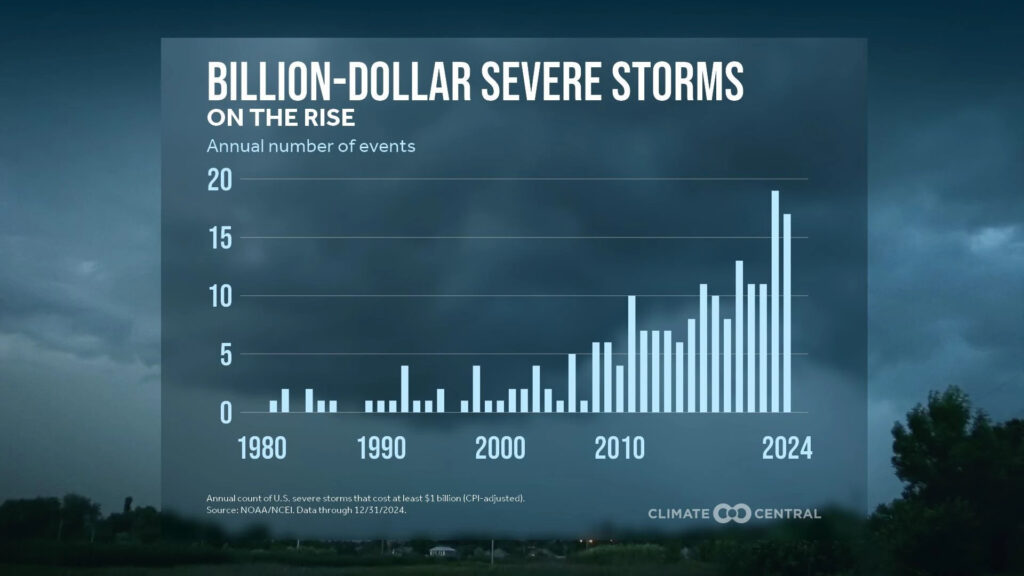In just four months, Tennessee experienced eight disasters that caused more than $1 billion in damage. Each event was considered a “severe storm,” defined as thunderstorms that produce tornadoes, damaging winds or large hail.
In early April, tornadoes and a nearly weeklong downpour spread destruction across the state. Clarksville set a new record for a five-day rainfall. The Nashville area ultimately got 161 tornado, thunderstorm and flash flood warnings in two weeks.
 Courtesy Climate Central
Courtesy Climate Central In 2023, the U.S. set a record with 28 billion-dollar disasters, including 19 severe convective storms.
In February, a severe storm system with tornadoes moved through the Southeast, killing two people in Tennessee. There were three events in March, two in May and another in June, according to Climate Central, which is now housing the data after the Trump administration ordered the National Oceanic and Atmospheric Administration to cancel the public dataset.
Climate Central has only reviewed data for the first six months of 2025 and will publish more data next year. Each “billion-dollar disaster” is defined as a weather or climate event that causes at least $1 billion in damages, often affecting multiple states simultaneously.
The U.S. faced 14 events, totaling an estimated $101 billion in damages and 174 deaths during that time. There were 12 severe storms, including six tornado outbreaks, one flooding and hail event in Texas and the January wildfires in Los Angeles. The wildfires alone caused more than $60 billion in damages.
There are four other potential events being accessed for this year, including the early July flash flooding in Texas that killed at least 136 people, including children at a camp.
Earth has been heating up. Carbon dioxide levels in the atmosphere reached record highs in 2024, committing the planet to more long-term temperature increases, according to a report released last month from the World Meteorological Organization. Use of gas, a fossil fuel composed mostly of methane, was the largest contributor to global carbon dioxide emissions growth.
Planetary warming leads to a greater number and severity of many types of weather and climate disasters, including wildfires, drought and heavy rainfall events. The continued burning of fossil fuels, deforestation and unsustainable agricultural practices increases greenhouse gas levels each year and heats the planet.
Disaster impacts have been rising, on average, due to both climate variability and increased risk, such as a larger U.S. population. Vulnerability is especially high in areas with outdated building codes.
The Southeast, South and Central regions of the U.S. tend to face more billion-dollar disasters than other areas. Tennessee has endured more than 100 disasters since 1980.
Severe convective storms, which include tornadoes, high winds or hail, represent the most common cause of billion-dollar disasters, according to Climate Central.
Copyright 2025 WPLN News





